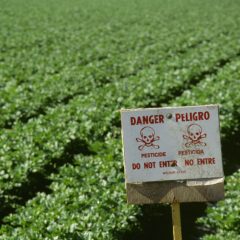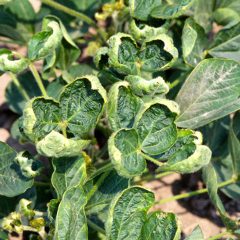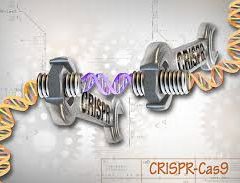The tagline in the remarkable New York Times story on junk food in Brazil reads: “As growth slows in wealthy countries, Western food companies are aggressively expanding in developing nations, contributing to obesity and health problems.” The Times story appeared September 16, 2017 and is accessible online. The authors, Andrew Jacobs and Matt Richtel, explain […]
Read More, References, Comment »
A highly-respected farm magazine editor, Greg Horstmeier, has called a spade a spade re the unfolding, dicamba crop-damage train wreck occurring across corn-soybean country. This is a must-read piece, because of the important historical context it provides. Horstmeier’s play-by-play of how we got here is a chilling account of how badly farm industry leaders and […]
Read More, References, Comment »
A distinguished team of scientists working for, affiliated with, or funding the CGIAR system of international agricultural research centers has issued a call for a new Global Crop Improvement Network (GCIN). The statement is entitled “Improving global integration of crop research” (Reynolds et al) and appears in the July 28, 2017 issue of Science Magazine. […]
Read More, References, Comment »
The headline to a July 25, 2017 story in the New York Times announces “Traces of Controversial Herbicide Are Found in Ben & Jerry’s Ice Cream.” Glyphosate herbicide in ice cream? How could this be? In her story, Stephanie Strom explains the “who, how, and why” of the testing of Ben & Jerry’s ice cream […]
Read More, References, Comment »
Paul Thacker’s latest piece on biotech industry efforts to influence media coverage and discredit scientists who raise questions about the impact of GE crops appears in The Progressive and is entitled “Flacking for GMOs: How the Biotech Industry Cultivates Positive Media.” Thacker tells the story of the genesis and funding of two “bootcamps” for science […]
Read More, References, Comment »
In a recent opinion piece in the Capital Press, Jerry Erstrom, the chairman of the Weed Board in Malheur County in southeastern Oregon, spoke out in support of holding ag businesses accountable for the damage caused by cross-pollination from GE crops. Malheur County is in the heart of ranch country and right next door to the […]
Read More, References, Comment »
The American Academy of Pediatrics and the Environmental Working Group submitted a letter this week to EPA Administrator Scott Pruitt condemning the Agency’s decision not to restrict use on the pesticide chlorpyrifos. As this Hygeia’s Blog describes, this decision went against the EPA’s own scientists, who had previously concluded that chlorpyrifos was linked to neurological […]
Read More, References, Comment »
A vote last week by the Arkansas Plant Board to impose an emergency ban on spraying dicamba herbicide is hot news in both the mainstream media and the ag community. Dicamba is used to battle the herbicide-resistant Palmer amaranth that plagues farmers in Arkansas, and the recent introduction of BASF’s Engenia brand dicamba herbicide, sold for use […]
Read More, References, Comment »
Hunter College’s New York City Food Policy Center recently interviewed Hygeia Analytic’s own Dr. Charles Benbrook, who they label a “maverick organic movement expert” in a piece published online this week. The NYC Food Policy Center works to “make New York a model for smart, fair food policy.” The interview covers several pointed questions about the influence of […]
Read More, References, Comment »
The pesticide-seed-biotech industry is rushing to corner the patent – and PR — market on CRISPR technologies used to silence, or turn up, the expression of genes in plants or animals. The rapidly growing gene-editing toolkit has innate advantages over first-generation genetically engineered (GE) plants. First-gen GE crops were developed by forcibly moving foreign DNA […]
Read More, References, Comment »










